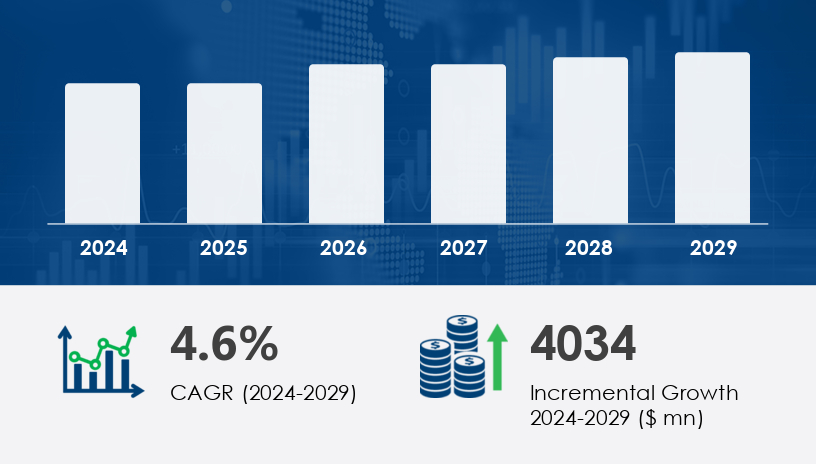The global Transformers for Renewable Energy Market is on a path of significant expansion, projected to grow by USD 4.03 billion from 2025 to 2029, at a CAGR of 4.6%. This surge aligns with a global transition toward sustainable power sources, particularly wind and solar, as governments aim to reduce carbon emissions and combat climate change. Offshore wind installations and upgrades to rural energy infrastructure are among the strongest market accelerators.
For more details about the industry, get the PDF sample report for free

The Transformers for Renewable Energy Market is witnessing rapid growth as the global shift toward renewable energy accelerates. Core components such as power transformers, distribution transformers, and smart transformers are critical in managing the increasing complexity of energy flow from decentralized renewable sources. Devices like step-up transformers enable effective voltage transformation from generation units such as Solar PV and wind turbines to the grid. Transformer designs incorporating shell core, closed core, and magnetic core configurations are being optimized to enhance performance and reduce energy loss. Use of insulating materials like oil insulation and dry-type transformers ensures operational reliability across varied conditions. To improve sustainability, eco-friendly transformers now feature biodegradable fluids, such as ester fluids, contributing to carbon reduction. Key to grid performance, these transformers support grid stability, enable renewable integration, and contribute to broader grid modernization efforts. Applications in solar integration, wind power, and power distribution highlight their significance in the evolving energy landscape.
Global Policy Shift Toward Renewables: Regulatory bodies are pushing for clean energy adoption. Countries like China are expanding renewable capacity steadily through 2035, reinforcing demand for grid-compatible transformer solutions.
Infrastructure Modernization: Increased electricity demand, especially in India and China, has sparked large-scale upgrades to existing power grids.
Decarbonization Strategies by End-Users: Institutions—ranging from commercial enterprises to educational facilities—are deploying transformers to integrate renewable sources into legacy grids.
Offshore Wind Expansion: The growing number of offshore wind farms is a pivotal trend. These require specialized transformers capable of operating under harsh environmental conditions and high load variances.
Solar PV + Energy Storage Integration: Bidirectional transformers supporting solar photovoltaic systems coupled with storage solutions are emerging to counter power intermittency and reduce grid dependency.
Eco-Friendly Design Adoption: New-generation transformers using advanced insulating materials and low-impact magnetic cores are gaining momentum due to their minimal environmental footprint.
High Upgrade Costs: Transforming legacy power networks to handle variable energy inputs remains capital-intensive, posing a challenge for stakeholders.
Renewable Energy Intermittency: Weather and time-based fluctuations from solar and wind systems increase grid management complexity, necessitating cutting-edge transformer technology to maintain stability.
See What’s Inside: Access a Free Sample of Our In-Depth Market Research Report.
Solar PV (notably strong growth expected)
Wind Farm
Dry Insulation
Liquid Immersed Insulation
Distribution Transformers
Power Transformers
Others
5 MVA to 100 MVA
100 MVA to 500 MVA
500 MVA and Above
The solar PV segment, valued at USD 9.11 billion in 2019, continues to show robust growth. Increasing solar deployment by commercial and residential customers has propelled demand for transformers that stabilize voltage and allow for grid integration. These transformers are vital in:
Commercial buildings
Department stores
Educational campuses
Urban smart grids
The use of dry-type transformers—noted for fire safety and low environmental impact—is accelerating within this segment.
The global market is segmented into the following regions:
APAC is the epicenter of growth, projected to contribute a dominant 74% to the global market expansion during the forecast period. This is attributed to:
Urbanization and industrial growth in China and India
Government-led clean energy goals
Rising private utility initiatives in South Korea, Japan, and Australia
Country-wise Regional Breakdown:
APAC: Australia, China, India, Japan, South Korea
Europe: France, Germany, UK
North America: US, Canada
South America
Middle East and Africa
The market is evolving to support:
Bidirectional transmission systems
Smart grid compatibility
Eco-material based transformers for offshore and remote installations
Large capacity transformer installations (>500 MVA) for utility-scale projects
Transformers are being custom-designed to:
Operate in extreme climates
Match dynamic voltage profiles
Support hydropower generation in regions with limited grid access
Get more details by ordering the complete report
The competitive landscape includes legacy manufacturers and innovative tech providers:
These firms are engaging in strategic alliances, M&As, and product innovations to scale capacity, enhance energy efficiency, and gain regional footholds.
For energy technology providers, EPCs, and grid modernization consultants, this evolving landscape presents both a challenge and an opportunity:
Invest in modular, scalable transformer tech for microgrids and hybrid plants
Prioritize environmental certifications to meet ESG criteria
Develop products optimized for energy storage integration
Align with local compliance and safety standards, especially in APAC markets
As global electrification surges, success in the transformer market will hinge on adaptability, sustainability, and grid-centric innovation.
The Transformers for Renewable Energy Market is witnessing rapid growth as the global shift toward renewable energy accelerates. Core components such as power transformers, distribution transformers, and smart transformers are critical in managing the increasing complexity of energy flow from decentralized renewable sources. Devices like step-up transformers enable effective voltage transformation from generation units such as Solar PV and wind turbines to the grid. Transformer designs incorporating shell core, closed core, and magnetic core configurations are being optimized to enhance performance and reduce energy loss. Use of insulating materials like oil insulation and dry-type transformers ensures operational reliability across varied conditions. To improve sustainability, eco-friendly transformers now feature biodegradable fluids, such as ester fluids, contributing to carbon reduction. Key to grid performance, these transformers support grid stability, enable renewable integration, and contribute to broader grid modernization efforts. Applications in solar integration, wind power, and power distribution highlight their significance in the evolving energy landscape.
Safe and Secure SSL Encrypted